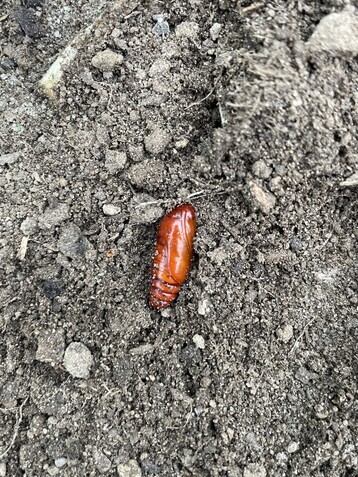Current Nature: Survival Mode
Kristin Bullett, Community Engagement Coordinator at the Linda Loring Nature Foundation •

It’s time to bring in the patio furniture, winterize faucets and dig out winter clothes from the back of the closet. As we ready ourselves and our homes for winter, nature is preparing for colder days too.
How do plants and animals survive winter without puffy coats, hot cocoa, and heaters? The key is to avoid freezing, which is tricky when most living things have a great deal of water in them. We know water freezes in cold temperatures, which is a problem when all the cells in your body are soft, thin, and full of water. Ice crystals are sharp and can cause a lot of damage to cells. So, plants and animals find ways to either avoid freezing, or keep their most important organs and parts from freezing completely. The motto for survival is freeze safely, or not at all!
A tree in winter may look dull and lifeless, but they are very much alive, albeit in survival mode. This time of year, deciduous trees (those that drop their leaves once a year, unlike evergreens) send their nutrients to the roots, where they are stored until the next growing season. During the freezing months, trees can move water from inside its cells into the spaces between cells. Even if the water freezes in these in-between spaces, the cells themselves and their vital ability to function remain intact. This is an example of freezing safely.
Many trees also create their own antifreeze by concentrating sugars, salts, and other compounds in their cells, which lowers the point that they will freeze- meaning it would have to be much colder to damage the plant than the 32 degrees that it takes to freeze water. This antifreeze helps the tree survive in low temperatures that would surely kill it otherwise.

Animals have similar ways of protecting themselves against freezing in winter. One strategy among many insects is to spend the winter dormant under leaf litter or buried in soil. The temperatures here are often much warmer than the air. Some insects spend the winter as pupa, or chrysalis, which is another layer of protection from cold. And like many trees, some insects can create antifreeze too! The Mourning Cloak Butterfly safely overwinters as an adult by replacing the water in its cells with sugars. Armed with this antifreeze, the butterfly folds its wings and tucks itself under a log, into leaf litter or under loose bark on a tree to ride out the winter.

One of the most well-known winter survival strategies is migration- simply back your bags and head somewhere warm! There are many bird species that migrate, but you have probably noticed that quite a few stick around all winter. So how do the Chickadees, Cardinals, and Red-tailed Hawks survive? Well, all cold-climate birds pack on extra fat in late summer and early fall to add more insulation to their bodies. Keeping their feathers clean and dry is also essential for a bird to stay warm. Feathers trap pockets of air around the bird, which insulates it from cold. Birds can also weatherproof their feathers with oil, produced by a special gland near their tails. This helps keep feathers in top shape.

Much like humans, a bird’s feet are vulnerable to freezing in cold temperatures. You might have noticed a goose or duck standing on one leg, tucking the other against its body. This is a lot like us humans tucking a hand in your armpit to warm it up. Waterfowl (ducks, geese, and other aquatic birds) have a special circulatory system that isolates the blood in their legs and feet. This keeps the blood in their bodies warmer, protecting vital organs are. This strategy is a bit sacrificial, but similar to how the human body focuses on keeping the most crucial parts of us warm.
After learning about how plants and animals survive the winter, I’m amazed at how resilient nature is. I’m also grateful to have the human comforts of a coat, boots, blankets, and a heater to get through the next few months!
Stay tuned for more editions of Current Nature, a bi-weekly column featuring seasonal topics, natural history information, and advice on the outdoors from the staff at the Linda Loring Nature Foundation.